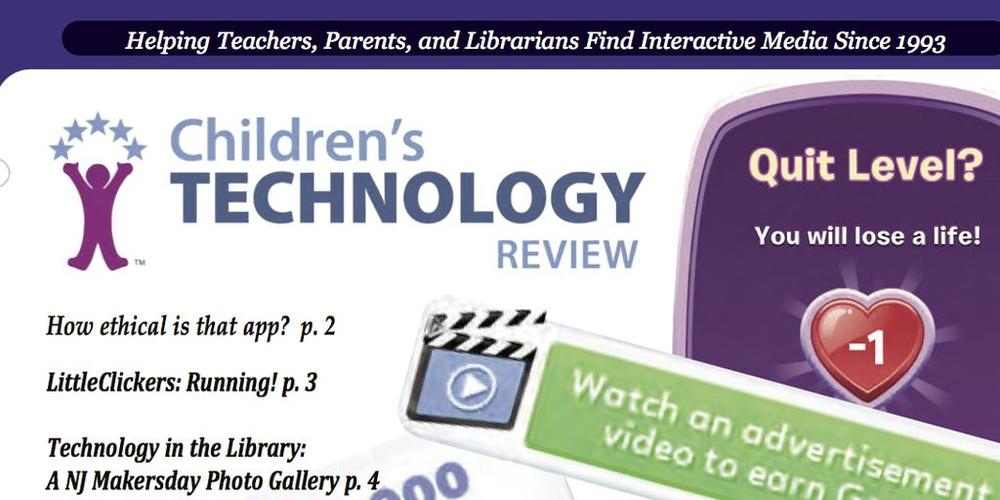
I’m sure many of you know about Children’s Technology Review, which has been the gold standard for reviews of kid-focused tech for decades. The magazine still reviews hardware, PC games, and console games, but the bulk of each issue is now focused on apps.
The editorial staff is constantly working to improve their reviews and the ability to search them and apply them, but I was still happily surprised to see, in their recent issue, news that they’re allowing for an “Ethical” quality attribute. While this is great for the reviews in general, I thought their list of things to watch out for was something that all parents should think about when looking at the apps their kids use, and I asked the editors if I could post those guidelines here. Freemium (or “paymium,” to use CTR‘s term) apps can make big money for their publishers, and children are suggestible, unable to distinguish ads from storyline content until they’re four or five. We as parents are the defense against manipulative tactics. (Be sure to require password entry for in-app purchases!)
Here are the things Children’s Technology Review calls out as “Attributes of Evil,” with Disney Magic Kingdoms being used as one of their showcase apps. They describe it as “a high-quality app with low ethical standards” and “if a Las Vegas casino developer made apps, it might look like this one.” We might be used to these tactics, but our young kids are not.
- Holds prior work hostage – Imagine if your child worked hard on something creative, only to find that it might go away without the right In-App Purchase.
- Mixes play with selling – Items for sale are put directly into the play area.
- Uses the candy lane technique – Any parent whose kid has seen the candy display at the grocery store understands how it gets children to plead for sweets.
- Uses a timer to pressure a decision – We’ve all seen this. Pay money to make your strawberries grow faster. You can’t play more until a day has elapsed. And so on.
- Mixes selling and informing – Even magazines have to declare that something is an “advertorial,” usually with small-type “Special Advertising Section” at the top. Apps are under no such restrictions.
- Contains “blind alleys” – Can’t find the exit or close icon when bringing up a buy screen? Well, there is one way through, right?
- Primes the pump for buying – I thought this was a pretty subtle one. Give the kids a bunch of in-game currency up front and then later tie the same currency to real-world money, without adding developmentally-appropriate messaging.
- Does not discourage accidental purchases – Too bad you can’t get a refund for that $99.99 item your child bought.
- Uses a properly designed parental gate – Kids can figure out how to get around simple lock screens, so make sure the app makes it tough for a kid to get past the controls that keep your wallet safe.
- Does not give adults decisions – Many apps let parents control some of what their child experiences in the app. But some do not.





It amazes me how these apps just lure our children into a world that they don’t understand!
A very much appreciated post for us the parents to watch out!
Thank you Derrick!
Matt from Chile
Yeah, I wonder what it’s like to work a job where you think of how you can leverage children’s naïveté for profit.
Thanks for the kind words!